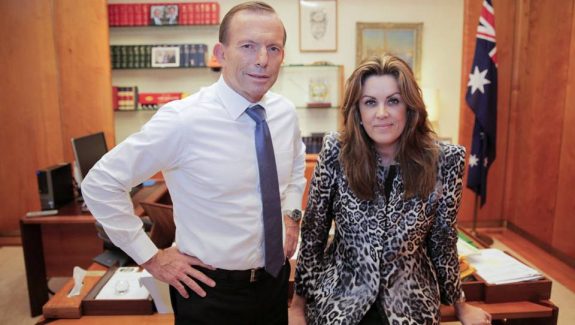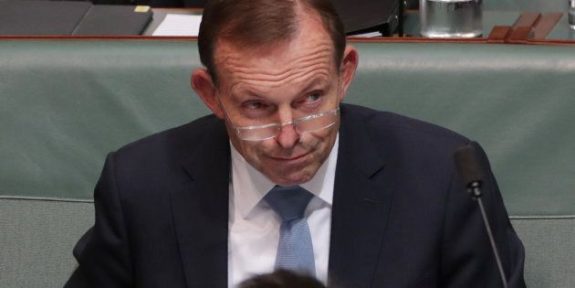The puppet masters

Before the time of Gough Whitlam, the public service were largely responsible for the formulation and co-ordination of policy and senior public servants made the important decisions. The Prime Minister had a single press secretary and ministers of the Crown relied on a very small staff to perform administrative and secretarial duties.
Whitlam created an office employing political staff to help strengthen an executive administration to formulate and implement policies. This continued under successive Prime Ministers with Howard overseeing an expansion of political staff in the Australian government to about 450 and the establishment of a government staff committee to take a tight reign over staff appointments.
As Nicholas Reece points out inthe SMH:
“TV programs such as The West Wing, In the Loop and The Hollowmen reflect the shift that has occurred in the balance of power in government from public servants to political staffers compared with the days of Yes Minister.”
And amongst these staffers, Abbott’s Chief of Staff, Peta Credlin, has arguably achieved more power than any of her predecessors. She and her husband Brian Loughnane run the Star Chamber with an iron fist, deciding who gets what job, who may speak to the media and when, and dictating what people will be told, much to the chagrine of Coalition backbenchers like Senator MacDonald.
Reece goes on to say:
“Credlin holds the ultimate backroom role in Australian politics. Despite her extraordinary power, she does not hold an elected position. She is not appointed by the cabinet, nor is she directly subject to the scrutiny of Parliament. And she does not do press conferences that would allow open questioning by journalists.”
Unless of course, it’s to make the bizarre disclosure that Abbott “allowed” her to keep her IVF drugs in his office fridge. For a very private woman, that was a very private thing to share publicly.
Not only do we have unelected, unaccountable, often inexperienced, staffers dictating policy, we also are paying a fortune to media spin doctors for them to sell their wares.
In August 2012, the Australian reported that:
“TAXPAYERS are spending about $150 million a year on an army of spin doctors to sell the Gillard government’s policies to voters.
Figures obtained by The Australian reveal there are about 1600 staff employed by federal government departments and agencies in media, communications, marketing and public affairs roles.
Opposition Senate leader Eric Abetz seized on the figures to accuse Labor of focusing on spin over substance and vowed to cut the numbers if in government.
Senator Abetz said he believed it would cost taxpayers an average of about $100,000 a year to keep each staff member in their job, once salary, entitlements and equipment were factored in. He said a Coalition government would cut the numbers.
“This is literally a battalion, if not an army, of spin doctors. What this highlights yet again is the government’s concentration on spin. They do get the initial message out very well, but the policy underpinning it and the administrative follow-up is always a shambles. Most Australians would agree that spin doctors are not necessarily a core business of a lot of these departments,” he said.”
Unfortunately, those heartening words from Senator Abetz as he decried the waste, turned out to be… spin.
In March 2014, the Canberra Times reported that:
“The federal government’s ”army” of spin doctors and communications staff has grown to more than 1900, based on data supplied by departments and agencies.
An analysis of answers to questions on notice supplied to a Senate committee shows staffers in government media, communications and marketing operations have increased by several hundred in two years and could be costing taxpayers as much as $190 million a year.
Public Service Minister Eric Abetz said the government was conscious of the growth of its spin machine and hinted action was being considered. Responding to the latest figures, the minister said they showed ”the approximate level of communications staffing that the Coalition inherited from the former government after the election.”
Of course – it is an example of Labor’s waste that the Coalition have had to employ more spin doctors.
And chief amongst these spin doctors is Mark Textor.
For the 2004 federal election campaign for John Howard, Textor was credited for the “who do you trust” campaign strategy refocusing key trust questions back on the then Opposition Leader’s economic competence – a line Tony Abbott recycled. In 2012 he was strategist and pollster for Campbell Newman’s Liberal National Party election campaign.
We also have “Tex” to thank for the catch cry quote: “We will stop the boats, stop the big new taxes, end the waste, and pay back the debt.”
So confident is Textor of his position, in November last year he felt it appropriate to tweet about Indonesian Foreign Affairs Minister Marty Natalegawa, whom he likened to a 1970s Pilipino [sic] porn star, also questioning his ethics.
Textor’s company profile says:
“Mark’s direct clients have included governments, premiers and opposition leaders in six countries and the CEOs and Boards of major Australian and multi-national companies in a broad range of industries, including; mining, fast moving consumer goods (FMCG), pharmaceutical, retail, financial services, banking (“Big Four”), tobacco, renewable energies, oil, gas and farming sectors.”
It’s a bit rich for a man who will say anything for money to be lecturing on ethics.
Australia’s Power Index acknowledged his skill with the focus group:
“He’s a genius at transforming raw research into compelling communication – someone who presses people’s emotional buttons, identifies points of division, and boils complex issues down to their core.”
This is the man who has sold the message of fear and division, and is praised for so doing.
As reported in the Guardian:
“In Queensland, New South Wales and Western Australia, Crosby Textor declares it is paid to lobby on behalf of the Australian Petroleum Production and Exploration Association.
APPEA is the peak industry group for the oil and gas industry and among other things, speaks on behalf of Australia’s booming coal seam gas industry.
Crosby Textor also carries out research for industry groups such as the Queensland Resources Council – the peak body for mining in the state.
Crosby Textor also lists on the lobby registers other clients including Research In Motion (the makers of BlackBerry), property developers, a plastics company, a recycling firm, a business making biofuels and a charity that aims to better protect cyclists.”
How can we expect honesty and integrity from a government which is run by a woman who craves personal power without accountability and a man who has a vested interest in manipulating opinion and policy in favour of his clients?
Like what we do at The AIMN?
You’ll like it even more knowing that your donation will help us to keep up the good fight.
Chuck in a few bucks and see just how far it goes!
Your contribution to help with the running costs of this site will be gratefully accepted.
You can donate through PayPal or credit card via the button below, or donate via bank transfer: BSB: 062500; A/c no: 10495969











